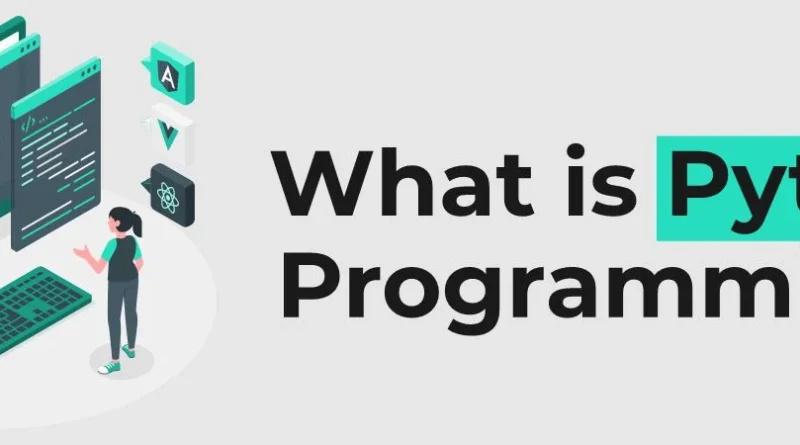What is python programming?
Table of Contents
Common Operations of Python Programming
Introduction
Python is a versatile programming language that has gained immense popularity in recent times. Numerous people ask, “What’s Python programming?” It’s known for its simplicity and readability. Python is used across various fields, from web development to data science. In this composition, we will explore the common operations of Python programming and its significance in today’s tech-driven world.
1. Web Development
One of the most popular operations of Python programming is in web development. Python offers several frameworks that streamline the development process. Frameworks like Django and Flask allow inventors to build secure and scalable web applications quickly.
Django Framework
Django is a high-level framework that encourages rapid development. It follows the model-view-template (MVT) architecture. This framework is known for its security features and scalability. Many well-known websites, such as Instagram and Pinterest, use Django.
Flask Framework
Flask is another popular framework used for web development. It’s lightweight and easy to learn, making it ideal for newcomers. Flask allows inventors to create simple web applications quickly. It offers flexibility and is well-suited for small to medium-sized systems.
2. Data Science and Analysis
Python is a commanding choice for data science and analysis. Its important libraries make it easy to manipulate and visualize data.
Pandas
Pandas is a library specifically designed for data manipulation and analysis. It provides data structures like Series and DataFrames, which simplify data handling. Analysts use Pandas to clean, transform, and analyze datasets efficiently.
NumPy
NumPy is another essential library for data science. It allows for numerical computing and handling multi-dimensional arrays. Data scientists frequently use NumPy for mathematical operations and large datasets.
Matplotlib and Seaborn
Matplotlib and Seaborn are libraries for data visualization. They help produce informative and visually appealing graphs. Analysts can use these libraries to present their findings effectively.
3. Machine Learning and Artificial Intelligence
Python is extensively used in machine learning and artificial intelligence (AI). Its simplicity and expansive libraries make it suitable for these complex tasks.
Scikit-Learn
Scikit-Learn is a popular library for machine learning. It provides tools for building and assessing models. Developers can apply algorithms such as regression, classification, and clustering easily.
TensorFlow and Keras
TensorFlow and Keras are powerful libraries for deep learning. Tensor is developed by Google and is widely used in AI applications. Keras acts as an interface for TensorFlow, simplifying the process of building neural networks.
PyTorch
PyTorch is another popular library for deep learning. It’s favored by researchers and developers for its dynamic computation graph. This flexibility allows for easy experimentation with neural network architectures.
4. Automation and Scripting
Python is frequently used for automation and scripting tasks. Its easy syntax and rich set of libraries make it ideal for automating repetitive tasks.
Web Scraping
Web scraping is a common operation of Python in automation. Libraries like BeautifulSoup and Scrapy allow developers to extract data from websites easily. This technique is useful for gathering information for analysis or research.
Task Automation
Python can automate various tasks, such as file management and data entry. By writing scripts, users can save time and reduce errors. Automation scripts can handle tasks like sending emails or generating reports.
5. Game Development
Python is also used in game development. While it may not be as common as other languages, it has several libraries that support game creation.
Pygame
Pygame is a popular library for game development. It provides tools for creating 2D games quickly. Developers can easily manage graphics, sound, and user input.
Educational Games
Many educational institutions use Python for developing educational games. These games help students learn programming concepts in an engaging way. Python’s simplicity makes it accessible for beginners in game development.
6. Internet of Things (IoT)
Python is increasingly being used in the Internet of Things (IoT) applications. Its ease of use and versatility make it a suitable choice for IoT devices.
Raspberry Pi
Raspberry Pi is a small, affordable computer used in various IoT projects. Python is the preferred language for programming Raspberry Pi. Users can build smart devices, home automation systems, and more.
Sensor Data Collection
Python can collect and analyze sensor data in real-time. This capability is essential for monitoring environmental conditions or managing smart homes. The ease of integrating Python with hardware makes it a favorite among IoT developers.
7. Scientific Computing
Python is widely used in scientific computing and research. Its libraries provide tools for performing complex mathematical operations.
SciPy
SciPy is a library for scientific computing. It builds on NumPy and provides additional functionality for optimization, integration, and interpolation. Researchers use SciPy for various applications, including physics and engineering.
Bioinformatics
Python is also prevalent in bioinformatics. Researchers use it to analyze biological data, such as DNA sequences. Libraries like Biopython facilitate the analysis of biological information efficiently.
Conclusion
In conclusion, Python programming is a powerful tool with diverse operations. From web development to data science, its versatility is unmatched. Understanding “What’s Python programming?” is essential for anyone looking to enter the tech industry. As Python continues to evolve, its applications will expand, making it an invaluable skill in today’s job market. Whether you’re a beginner or an experienced developer, Python offers opportunities for growth and innovation.


